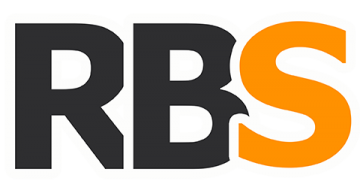Content
In most cases, increasing production will make each additional unit more profitable. This is because fixed costs are now being spread thinner across a larger production volume. For example, if a business that produces 500,000 units per years spends $50,000 per year in rent, rent costs are allocated to each unit at $0.10 per unit. If production doubles, rent is now allocated at only $0.05 per unit, leaving more room for profit on each sale. This will give you an idea of how much of costs are variable costs. You can then compare this figure to historical variable cost data to track variable cost per units increases or decreases.
To correctly determine the gross and net income– When the cost of the goods sold has been correctly identified, the gross profit margin could then be calculated. It is that profit which the business has obtained before deducting the relevant taxes as well as other expenses. When the gross profit is correctly calculated, the net profit can also be derived.
More Resources on Small Business Accounting
Once you understand this, you can know where you should be focusing most of your attention. For example, raw materials, packaging and shipping, and workers’ wages are all variable costs. Fixed costs are those that will remain constant even when production volume changes. Cost of Goods https://online-accounting.net/ Sold measures the “direct cost” incurred in the production of any goods or services. It includes material cost, direct labor cost, and direct factory overheads, and is directly proportional to revenue. Variable costs aren’t a “problem,” though — they’re more of a necessary evil.
The cost of goods sold simply means the expenses that are borne by an organization in selling its products. A major part of the cost of goods sold would ideally be variable costs. Nevertheless, even a small portion of the fixed costs would also be included. However, it is normally assumed that the cost of goods sold is a variable cost. A variable cost is a cost component that fluctuates within the quantity produced. Marginal cost refers to how much it costs to produce one additional unit.
Cost of Goods Sold on Business Tax Returns
Variable costs are those that rise and fall with the production volume. Typically found in cost of goods sold, it does not always include everything in COGS. Now let’s consider what this information would mean for your business. You already know that your variable cost per unit is $0.60 per cookie. Combine that with your average fixed cost of $0.65 per cookie, and you have a total cost of $1.25 per cookie.
This cost advantage could be due to cheaper resources, cheaper labor, or greater manufacturing efficiency. Say that in this example, in the highest month you had a water bill of $9,000 and 60,000 machine-hours of production. In the lowest, you had an $8,000 water bill and 50,000 machine-hours of production. Depending on the COGS classification used, ending inventory costs will obviously differ. Arbitrarily picking %A and %B can end up yielding you incoherent operating results. The WSO investment banking interview course is designed by countless professionals with real world experience, tailored to people aspiring to break into the industry.
Products
As mentioned earlier, business costs consist of both fixed and variable costs depending on your work line, type of business, and industry. Variable expenses do not remain consistent if the output how to find variable cost of goods sold product changes. Fixed costs are different because they remain constant regardless of the output. These costs are fundamental to ensuring you take strategic business decisions based on cost.
As the volume of goods or services increases, so will variable costs. Likewise, if the volume of goods or services decreases, the variable costs will decrease.
How Do You Calculate Cost of Goods Sold (COGS)?
Variable overhead is the indirect cost of operating a business, which fluctuates with manufacturing activity. Commissions are often a percentage of a sales proceeds that is awarded to a company as additional compensation.
Contribution Margin: What It Is, How to Calculate It, and Why You Need It – Harvard Business Review
Contribution Margin: What It Is, How to Calculate It, and Why You Need It.
Posted: Fri, 13 Oct 2017 07:00:00 GMT [source]
As per the FIFO method, the goods that have been brought in first would be sold first. This could suggest that the least expensive products are being sold first, which in turn produces a lower cost of the goods sold. In calculating the cost of goods sold, the opening inventory must be added to the purchases that are made during the period.

Recent Comments